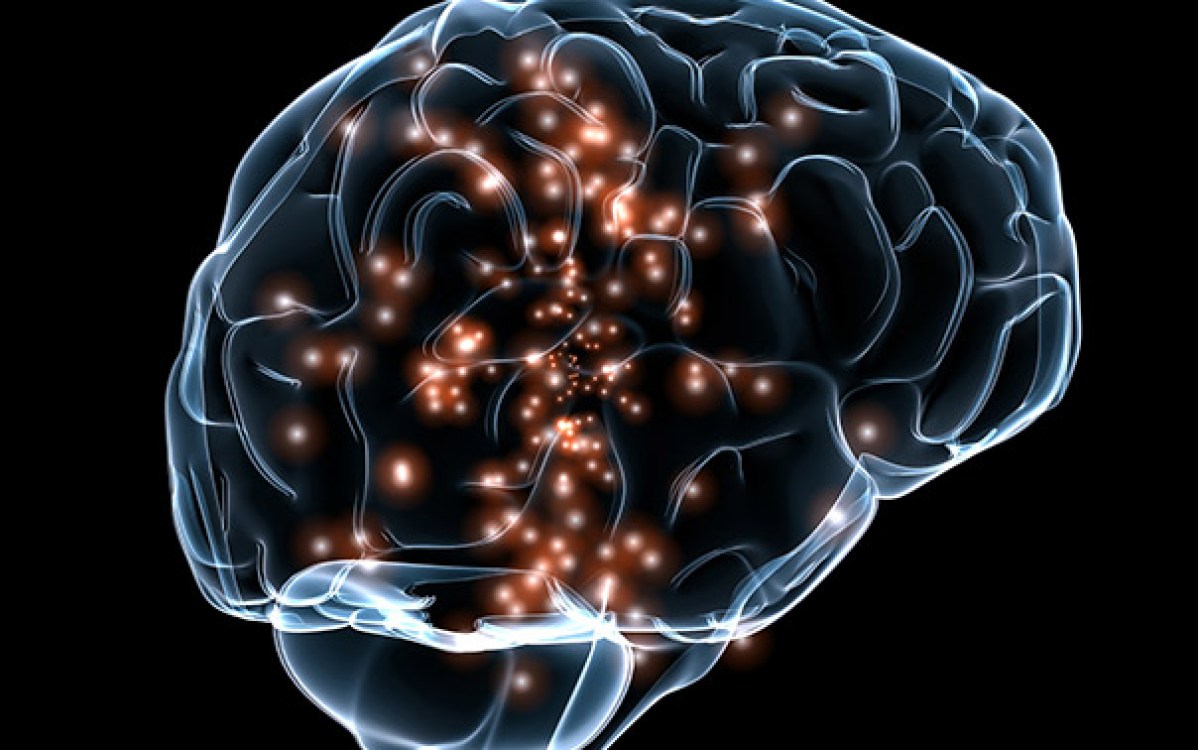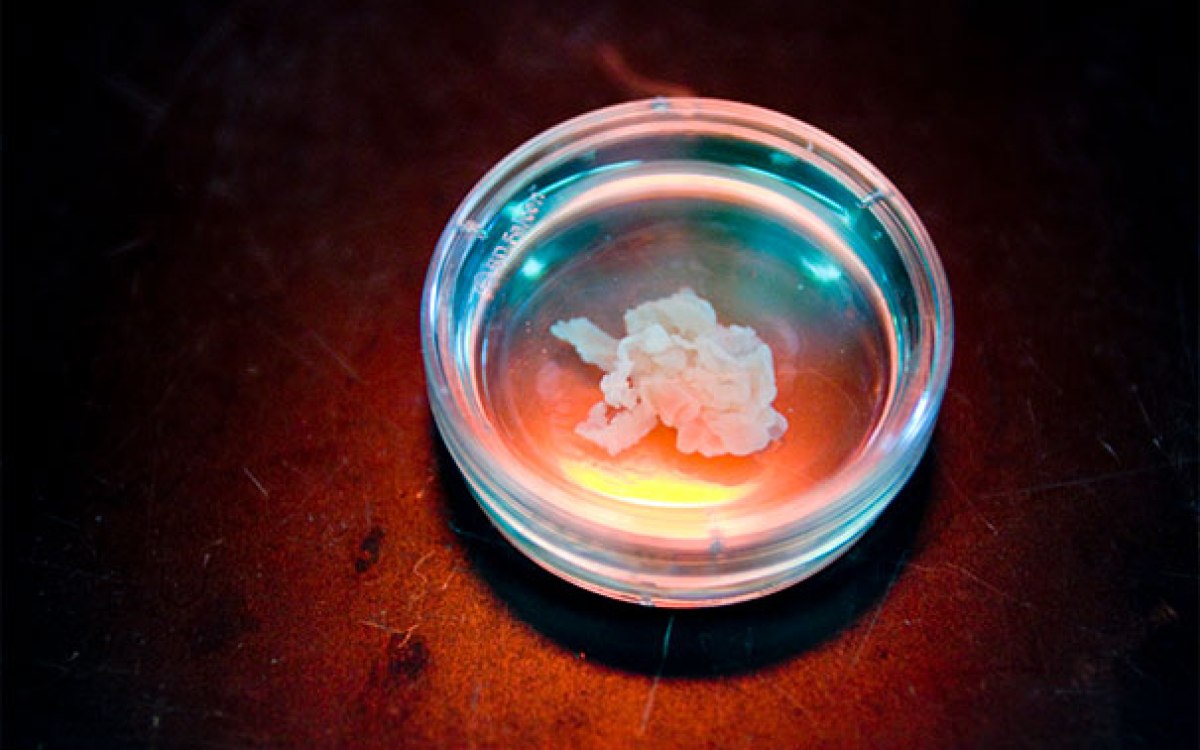Promising projects

Hans Reniers/Unsplash
16 Harvard scientists receive NIH High-Risk, High-Reward awards
Sixteen Harvard scientists are among the 93 researchers who have been selected to receive grants through the National Institutes of Health’s High-Risk, High-Reward Research Program, which funds innovative study addressing major challenges in biomedical science.
Jason Buenrostro, assistant professor of stem cell and regenerative biology; Brian Liau, assistant professor of chemistry and chemical biology; Sichen Shao, assistant professor of cell biology; Brian Edlow, assistant professor of neurology, Massachusetts General Hospital (MGH); Rajat Gupta, instructor of medicine at Harvard Medical School and a cardiologist at Brigham and Women’s Hospital; Ryuji Morizane, assistant professor of medicine, MGH; Seth Rakoff-Nahoum, assistant professor of pediatrics, Boston Children’s Hospital; Alexandra-Chloé Villani; assistant professor of medicine, MGH; and Courtney Yuen, instructor in medicine, Brigham and Women’s, will receive New Innovator Awards.
Vadim Gladyshev, professor of medicine, Brigham and Women’s, will receive a Transformative Research Award.
Michael Mina, assistant professor of epidemiology; Kapil Ramachandran, a junior fellow of the Harvard Society of Fellows and a research associate in molecular and cellular biology; and Sol Schulman, instructor in medicine, Beth Israel Deaconess Medical Center (BIDMC), will receive Early Independence Awards.
Mark Andermann, associate professor of medicine, BIDMC; Sun Hur, associate professor of biological chemistry and molecular pharmacology and associate professor of pediatrics at Boston Children’s; and Hidde Ploegh, a member of the faculty of pediatrics at Boston Children’s, will receive NIH Director’s Pioneer Awards.
“Each year, I look forward to seeing the creative approaches these researchers take to solve tough problems in biomedical and behavioral research,” said NIH Director Francis S. Collins. “I am confident the 2019 cohort of awardees has the potential to advance our mission of enhancing health through their groundbreaking studies.”
Jason Buenrostro is interested in the ways that adult stem cells can harbor epigenetic errors, and how these relatively minute changes can lead to large changes in the cell’s normal capacity to self-renew and differentiate.Sometimes called epi-mutations, those errors don’t result in changes to a cell’s DNA sequence, but rather produce changes in the expression of specific genes.
Buenrostro plans to use the NIH funding to develop a model for understanding how errors associated with maintaining an epigenetic state, and the propagation of these errors to daughter cells, could be a key missing piece in our understanding of how and why cells make certain fate decisions.
“Traditional methods used to study the epigenome … lack the resolution to measure epigenomic dynamics in human tissues,” Buenrostro explained. “We want to develop new methods to measure the epigenome at single-cell resolution and apply these methods to primary hematopoietic stem cells.”
That understanding, he said, won’t just shed new light on how epigenomic alterations may alter lineage potential of hematopoietic stem cells in normal and diseased states, but could also provide powerful insights into therapeutic targets.
Buenrostro’s lab also plans to expand their experimental tool kit, which will empower research efforts that seek to understand regulatory changes across diverse cell types, which may ultimately help guide the direction of therapeutics that seek to intervene in disease progression.
Brian Liau’s lab is devoted to deciphering the structure-function relationships between chemical inhibitors and their biological targets. That understanding, he said, is essential not only for target validation and lead compound optimization, but also for understanding drug mechanism of action as well as target biology.
“I am thrilled to receive this grant, which was a pleasant surprise,” Liau said of the award. “Receiving this grant has been a tremendous boost to my lab, providing invaluable resources that allow us to more freely pursue our most ambitious ideas.”
One of those ideas, Liau said, is the development of new approaches that would combine chemical inhibitor profiling with genome editing to systematically alter proteins to probe those relationships directly in cells in a high-throughput manner. They are currently applying these strategies to study the functions of key proteins that regulate gene expression.
Developing high-throughput biochemistry tools could provide novel perspectives and insight into protein structure and function as they relate to the small-molecule mechanism of action, and could prove critical for elucidating disease mechanisms and developing novel small-molecule therapies.
Sichen Shao’s lab is focused on understanding how cells monitor different steps of protein biosynthesis to maintain a high-quality proteome. That process is critical, she said, because failing to correctly make proteins or degrade defective proteins is the root of many genetic, neurodegenerative, and aging-related diseases.
“Understanding how cells distinguish rare aberrant products from similar biosynthetic intermediates can reveal how mistakes at the molecular level lead to disease and identify new therapeutic targets,” Shao said.
To understand how cells troubleshoot the process of protein synthesis, Shao’s work has turned to a host of tools, including biochemical reconstitutions, cell biological assays, and structural studies, to decipher the mechanisms that detect and handle problems encountered by ribosomes, the cellular machines that synthesize proteins.
The New Innovator Award, she said, will support efforts to generate high-throughput experimental tools and establish a “ribosome recognition” code defining the factors that recognize different types of aberrant ribosomes and propagating distinct cellular responses to regulate gene expression and protein homeostasis.
Brian Edlow’s lab at the MGH Center for Neurotechnology and Neurorecovery is developing tools to detect, predict, and promote recovery of consciousness in patients with severe traumatic brain injury.
Rajat Gupta’s research focuses on identifying new treatments for vascular disease using human genetics to discover the causal biologic pathways.
Ryuji Morizane has pioneered research in stem cell differentiation and kidney organoids. He directs research groups focused on kidney regenerative medicine, genome editing in stem cells, and kidney disease modeling with kidney organoids.
Seth Rakoff-Nahoum’s lab studies how each member of a microbiome interacts with the environment, each other, and the host, and uses genetic, molecular, cellular, and computational approaches combined with ecological and evolutionary theory to address these questions.
Alexandra-Chloé Villani’s lab aims to achieve higher-resolution definition and functional characterization of cell subsets and rules governing human immune-response regulation as a foundation for deciphering how immunity is dysregulated in diseases and for developing a comprehensive human immune lexicon that is key effectively translating findings from bench to bedside.
Courtney Yuen’s work focuses on improving the detection and prevention of tuberculosis and evaluating the impact of interventions in this area. She has collaborated with government and nongovernment programs in Kenya, Peru, Pakistan, and the U.S.
Vadim Gladyshev seeks to define principles of lifespan control and use this information to develop interventions that extend a person’s life.
Over the past two years, Michael Mina has worked with Stephen Elledge, Gregor Mendel Professor of Genetics and HHMI Professor at Harvard Medical School and Brigham and Women’s, to further refine a technology that can simultaneously measure and identify all of the antibodies that a person has against nearly any infectious pathogen using less than a single drop of blood.
Although the technology can provide new insights into an individual’s immunological history, Mina said a larger goal is to use the system to learn how infectious diseases spread and use the data, for example, for early epidemic or outbreak detection.
“You can think of the immune system, and in particular here the antibody repertoire, as an encrypted hard drive,” he said. “Once we decrypt it, it provides a tremendous level of potentially time-stamped details regarding infections, vaccines, and much more.”
The NIH funding, Mina said, will allow him to build a lab that is focused on developing and applying new tools to read and interpret immunological repertoires and couple them with mathematical models to improve global public health efforts surrounding infectious disease surveillance, novel pathogen detection, and vaccine monitoring.
“My overarching goal is to develop ‘bio-computational’ tools centered on unlocking the troves of information contained within the antibody repertoire to be applied to infectious disease epidemic and emerging pathogen outbreak detection, to improving global public health surveillance, and to helping to improve how and when vaccines are given over a lifetime,” he said.
Kapil Ramachandran plans to use the NIH grant to further investigate his discovery of a new pathway of neuronal communication that also keeps neurons healthy.
For years, he said, it has been understood that protein complexes called proteasomes act as a form of intracellular “trash removal,” breaking down unneeded proteins into smaller fragments called peptides. Ramachandran, however, discovered a variant of those proteasomes that sits at the interface between the inside and outside of neurons.
“In this way, when this neuro-proteasome degrades a protein, it actually immediately releases the degradation fragments which go on to signal to other cells in the brain,” he said. “This is profoundly unusual, because it suggests that there is an entire system of communication that we have been missing for a long time.”
Ramachandran’s plan is to use genetic and molecular tools to dissect that pathway to understand how that system of degradation and signaling is coded and decoded in the brain, and to understand whether and how the pathway may be related to a number of neurodegenerative and neurodevelopmental disorders.
“I’m absolutely thrilled to have received this award,” he said. “This allows us to accelerate our work in ways that I have dreamed about for three years, and it puts into motion a tremendous amount of built-up potential energy on my work.”
Sol Schulman’s lab integrates functional genetics, genomics, protein biochemistry, and cell biology to identify new mechanisms regulating the initiation of blood coagulation relevant to the pathophysiology and treatment of human bleeding and thrombotic disease.
Mark Andermann’s lab seeks to understand how the needs of the body bias learning, attention, and imagery toward need-relevant objects, and how our attention shifts from these external stimuli toward internal body signals. To achieve these goals, the lab employs cellular and subcellular imaging methods to track the activity of specific brain cells in the retina, thalamus, cortex, amygdala, hypothalamus, and brainstem across weeks as mice seek food, water, mates, or safety. A better understanding of the fundamental mechanisms by which the brain and body communicate is of broad relevance to psychiatry, neurology, and medicine.
Sun Hur is interested in biochemical and structural mechanisms of protein-nucleic acid interactions in the immune system. These include innate immune receptors that recognize foreign nucleic acids, and transcription factors that play important roles in T cell development.
Hidde Ploegh’s focus is the biochemistry of immune recognition, in particular mechanisms by which pathogens and tumors avoid detection by the immune system. He is known for his analysis of the pathways involved in antigen processing and presentation by products of the major histocompatibility complex (MHC); for studies of glycoprotein synthesis, turnover, trafficking, and quality-control mechanisms; and for pioneering the use of human leukocyte antigen (HLA) transgenic mice to examine the properties of human MHC products as restriction elements. He has applied peptide chemistry to develop probes to study the activity of the proteasome and ubiquitin-specific proteases, and has utilized bacterial sortases for novel protein engineering applications. He has employed these technologies in the generation of improved cytokines, and most recently in conjunction with the isolation of camelid-derived single-domain antibodies, in the creation of improved tools for cytofluorimetry and noninvasive visualization of antitumor and antivirus immune responses using positron emission tomography.
The NIH issued 11 Pioneer awards, 60 New Innovator awards, nine Transformative Research awards, and 13 Early Independence awards for 2019. The 93 awards total approximately $267 million over five years, pending available funds. Funding for the awards comes from the NIH Common Fund; National Center for Complementary and Integrative Health; National Institute of Biomedical Imaging and Bioengineering; National Institute of General Medical Sciences; National Institute of Mental Health; National Institute of Neurological Disorders and Stroke; National Institute on Aging; National Institute on Alcohol Abuse and Alcoholism; and National Institute on Drug Abuse.







